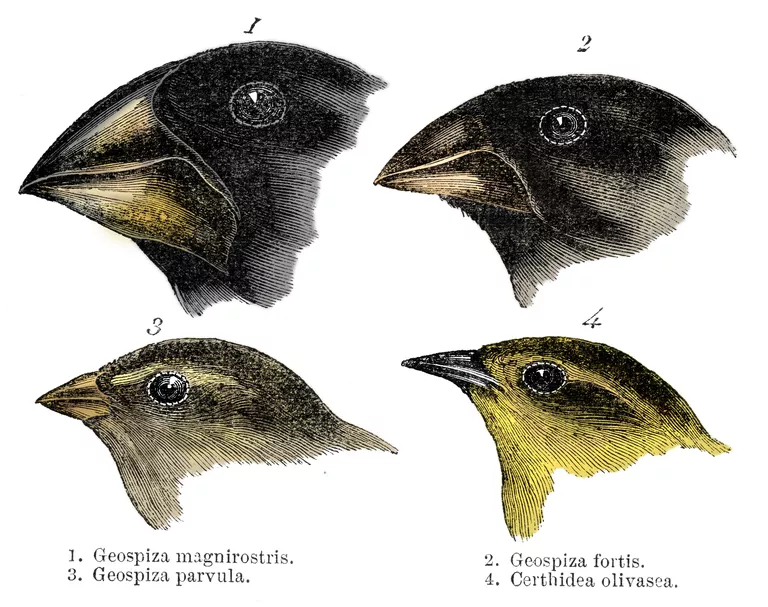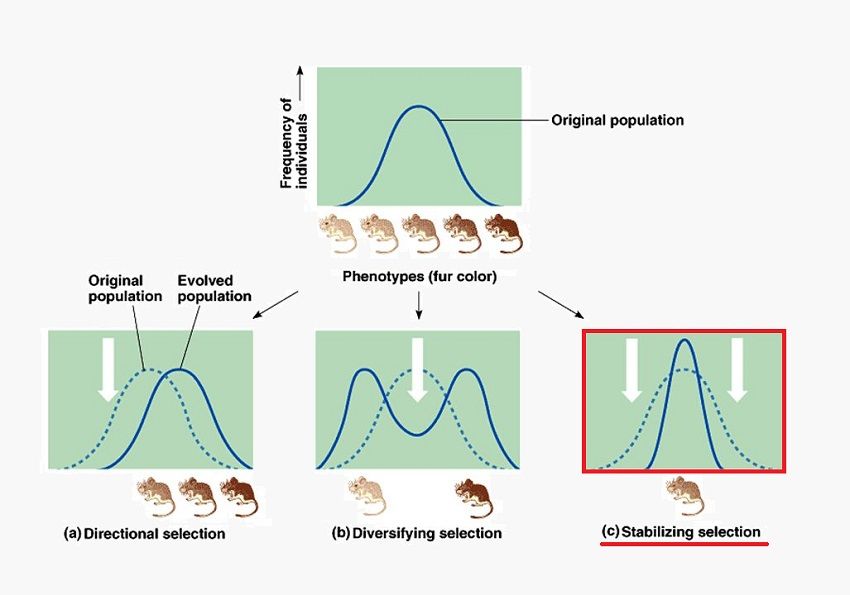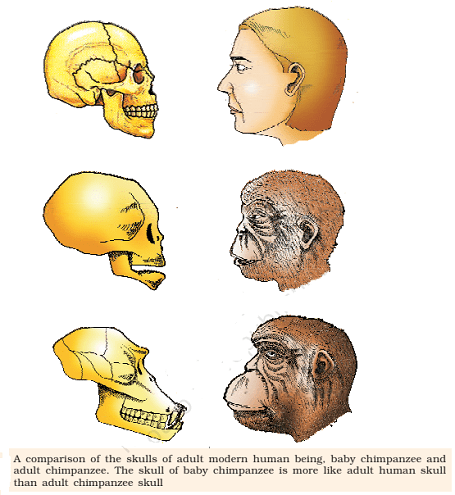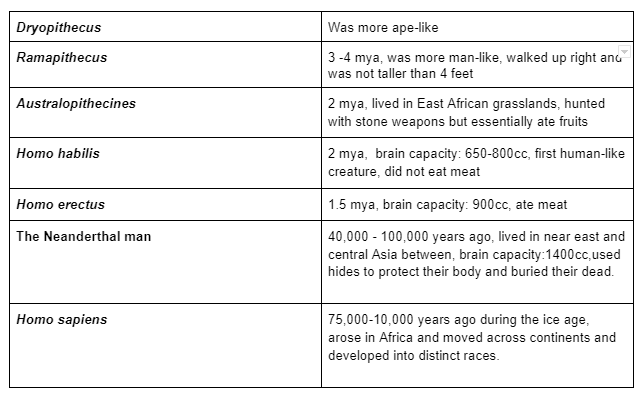CBSE Class 12 Biology Chapter 7 Revision Notes Part 2
Chapter 7: Evolution Revision Notes Part 2
In evolutionary biology, adaptive radiation is a process in which organisms diversify rapidly from an ancestral species into a multitude of new forms, particularly when a change in the environment makes new resources available, alters biotic interactions or opens new environmental niches. In a given population one can find out the frequency of occurrence of alleles of a gene or a locus using Hardy-Weinberg principle.
Adaptive radiation
- During Darwin’s journey to Galapagos Islands, he observed an amazing diversity of creatures.
- The process of evolution of different species in a given geographical area starting from a point and literally radiating to other areas of geography (habitats) is called adaptive radiation.
- Example — Darwin’s finches in Galapagos Islands, Australian marsupials and Placental mammals in Australia (e.g., Placental wolf and Tasmanian wolf-marsupial).
Biological Evolution
- Branching descent and natural selection are the two key concepts of Darwinian Theory of Evolution.
- The rate of appearance of new forms is linked to the life cycle or the life span.
- Adaptive ability is inherited. It has a genetic basis.
- Fitness is the end result of the ability to adapt and get selected by nature.
- Natural selection is based on certain observations which are factual. For example, natural resources are limited, populations are stable in size except for seasonal fluctuation, members of a population vary in characteristics, most variations are inherited etc.
Mechanism of evolution

Hardy-Weinberg Principle
- This principle says that allele frequencies in a population are stable and are constant from generation to generation. The gene pool (total genes and their alleles in a population) remains constant. This is called genetic equilibrium. Sum total of all the allelic frequencies is 1.
i.e., 
-
Disturbance in genetic equilibrium, or Hardy- Weinberg equilibrium, i.e., change of frequency of alleles in a population would then be interpreted as resulting in evolution.
-
Types of Natural Selection:
- Stabilising selection – In which more individuals acquire mean character value
- Directional selection – More individuals acquire value other than the mean character value
- Disruption selection – More individuals acquire peripheral character value at both ends of the distribution curve
-
Factors that affect Hardy-Weinberg equilibrium:
- Gene migration or gene flow
- Genetic drift
- Mutation
- Genetic recombination
- Natural selection
Gene Migration: When migration of a section of population to another place and population occurs, gene frequencies change in the original as well as in the new population. New genes/alleles are added to the new population and these are lost from the old population.
Gene flow: There would be a gene flow if this gene migration happens multiple times.
Genetic drift: If the same change occurs by chance, it is called genetic drift.
Founder effect: Sometimes the change in allele frequency is so different in the new sample of population that they become a different species. The original drifted population becomes founders and the effect is called founder effect.
Brief Account of Evolution
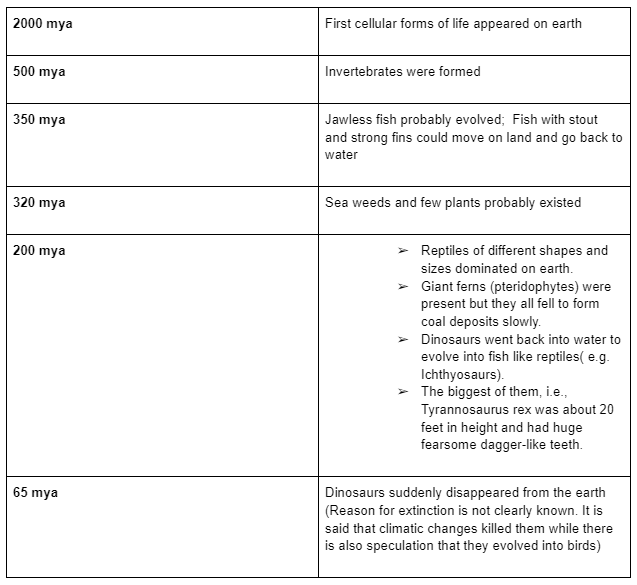
- In 1938, a fish caught in South Africa happened to be a Coelacanth which was thought to be extinct. These animals called lobefins evolved into the first amphibians.
- The first mammals were like shrews. Their fossils are small sized.
- Mammals were viviparous and protected their unborn young inside the mother’s body. Mammals were more intelligent in sensing and avoiding danger at least.
- When reptiles came down mammals took over this earth. There were in South America mammals resembling horse, hippopotamus, bear, rabbit, etc. Due to continental drift, when South America joined North America, these animals were overridden by North American fauna.
- Due to the same continental drift pouched mammals of Australia survived because of lack of competition from any other mammal.
Origin and Evolution of Man
About 15 mya, primates called Dryopithecus and Ramapithecus were existing.
Sources:
EVOLUTION. https://ncert.nic.in/textbook/pdf/lebo107.pdf Accessed 20 Dec, 2021.
]]>
